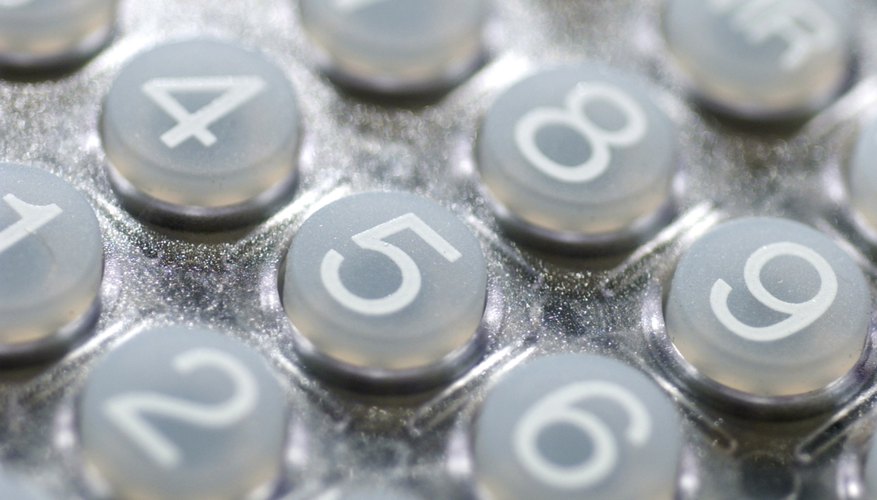Percentages can add another layer of complexity to mathematical equations. Combined with ordinal figures, subtraction of a percentage often requires patience and time to work out. While mental arithmetic is a useful skill to develop, sometimes speed is of the essence. Fortunately, subtracting a percentage from an ordinal number on a calculator is a straightforward operation.
- Percentages can add another layer of complexity to mathematical equations.
- Combined with ordinal figures, subtraction of a percentage often requires patience and time to work out.
Turn on your calculator. Have the figure you wish to subtract 20 percent from at hand. You may need to add several figures together to get a total from which to take away the percentage. This would be the case if you wish to subtract 20 percent from a select number of figures on a numerical list.
Enter the figure from which you want to subtract 20 percent. In this example, use 150.
Press the multiplication button on the calculator. It is symbolised by an “X.”
Enter “0.8. This figure represents 80 percent (it is 80 percent of “1”). If you multiply a number by 80 percent, you are automatically subtracting 20 percent from it. In the example used, the equation would read “150 x 0.8.”
- Enter the figure from which you want to subtract 20 percent.
- In the example used, the equation would read “150 x 0.8.”
Press the equals button, symbolised with the sign “=.” This will give you the result. In the above example the result is 120. You have subtracted 20 percent of 150.
TIP
It is always a good idea to repeat the calculation to double-check your answer, particularly if the equation is for a test or to calculate a payment.
